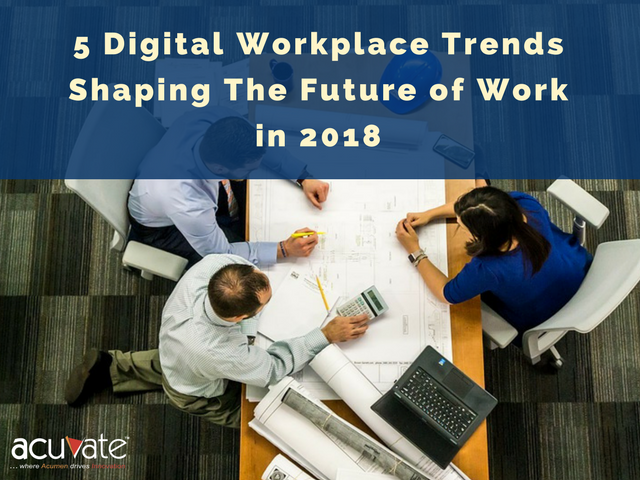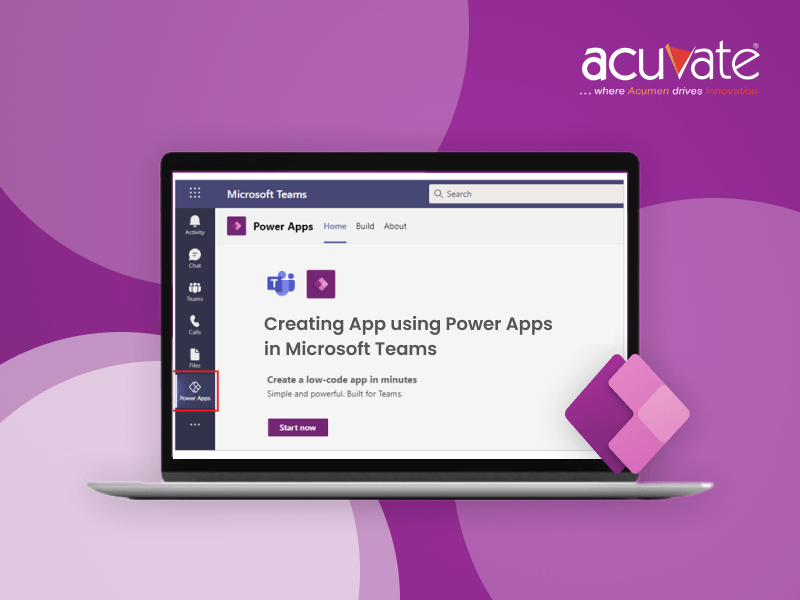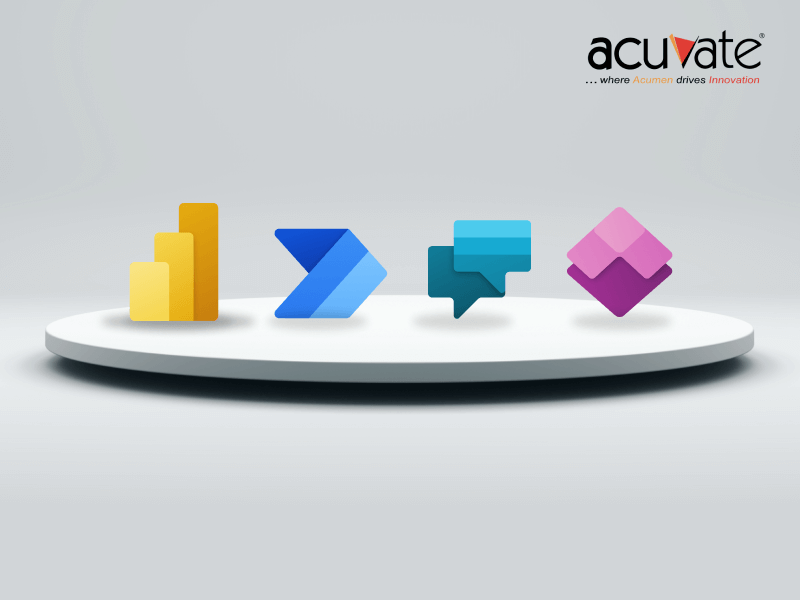The rapid expansion of the technological landscape in the 21st century led to a constant influx of new technologies in the enterprise IT. In the past few years, the enthusiasm to truly digitize the enterprise workplace peaked among IT leaders. However in 2017, there is a wide-spread realization that digitizing the workplace is not a sprint but a marathon and we are yet to cross mile 1.
New technologies have enhanced the way we analyze data, collaborate with colleagues and take decisions. And most of these technologies are still in the evolving phase and new and better ones are constantly replacing them.
95 PERCENT OF ORGANIZATIONS AGREE THAT A DIGITAL WORKPLACE IS IMPORTANT
While it’s impossible to exactly forecast the future, here are a few digital workplace technology trends that can change the way we work and demand special attention in 2018.
1. The Shift Towards Cloud Will Accelerate
By 2021, more than half of global enterprises already using cloud today will adopt an all-in cloud strategy – Gartner
Many organizations started small with cloud computing – usually as an experiment. In 2018, more business leaders will realize the importance of cloud data storage and consequently the adoption increases. The necessity for real-time data democratization throughout the organization will be one primary reason for this trend.
Usually staff below the manager level have to depend on someone from the IT department for custom report generation. This is a time taking procedure and often workers won’t bother undergoing it. If you’re in a disruptive industry like the CPG business, decision-making needs accuracy at all managerial levels and the lack of a cloud-based self-service Business Intelligence solution affects your overall revenue.
As organizations start moving towards a cloud environment, the pace and accuracy of decision-making increases and data will be accessible to all employees anywhere at anytime and across multiple devices. This will also boost both workforce and organizational productivity.
Better and convenient security and data management, lower infrastructure costs and remote working capability offered by cloud storage are some other aspects which will drive this trend.
2. Enterprise Chatbot Platforms Will Gradually Replace Traditional App Development
By 2021, more than 50% of enterprises will spend more per annum on bots and chatbot creation than traditional mobile app development – Gartner
As Microsoft CEO, Satya Nadella said “Bots are the new apps”. 2017 witnessed the rapid advancements in the fields of Machine Learning, Natural Language Processing and Conversational User Experience (CUX) paving the way for a more intelligent and efficient AI-Powered chatbots.
In 2018, more Enterprises will develop a bot strategy and use an AI-Powered chatbot platform to deploy, train and manage bots not only in the B2C scenario but also in B2B and B2E workflows.
Use cases of bots in the workplace will include automation of tedious tasks and quicker and convenient delivery of business insights to decision-makers. Enterprise need to assess their internal operations and recognize where chatbots can be a good fit. Some B2E examples of bots are:

- Automation of intranet and delivery of content, news etc., from it directly to the actively used messaging channel.

- Sales Bots: Extracting data and reports from ERP, LOB and CRM systems and sending them to sales teams’ via messaging app.

The conversational interface of chatbots allows users to obtain insights directly from the core enterprise applications (ERP, ESS, Productivity, LOB) via chat. With about 78 percent of enterprise apps being abandoned after initial use and 80% of businesses wanting to use chatbots by 2020 it’s safe to say these virtual assistants will play a huge role in driving business efficiency this year i.e 2018.
The improved convenience of obtaining rich business insights and automation of time-consuming tasks provided by bots will motivate employees to use data more often and drive business efficiencies.
However since the AI landscape is still evolving IT leaders should consider choosing an enterprise chatbot platform which offers the flexibility to choose and integrate the needed AI services as they mature.
3. Analytics for Everything
In 2018 we can see a majority of enterprises focusing more on application of analytics across multiple domains. Here are some scenarios:
- Analytics tools will be used to ensure the digital workplace constantly maintains a high end-user experience and adoption.
- The potential increase in cybersecurity threats, emergence of a mobile workforce and a multiple-cloud environment will make way for advanced security analytics. These analytics will detect and predict threats after taking data from multiple sources.
As Gartner’s Vice President – Peter Sondergaard says, “information is the oil of the 21st century and analytics is the combustion engine”. In 2018 and beyond we can see that creating a culture of analytics among the workforce will become imperative for businesses to remain relevant.
The incorporation of this culture in all business workflows will result in heavy cost-cuttings and drives a more hassle-free and accurate data-backed decision making among employees.
4. Bigger Investments in Robotic Process Automation
RPA offers a potential business ROI of 30 – 200 percent – Leslie Willcocks
RPA is the large-scale automation of business processes to cut costs, automate tedious tasks, link applications and boost employee productivity. In 2017, several large enterprises took their initial steps towards RPA. This trend will continue in 2018 and the investments by both early adopters and new companies will significantly grow. IT leaders need to choose the right softwares and strategically combine with other technologies like Artificial Intelligence, document capture, machine learning etc. for powerful business outputs.
This mainstream adoption of RPA leads to a positive change in job roles of the workforce. Since RPA promises an error-free automation of manual business workflows, employees’ jobs/work will become more interesting and productive.
5. Immersive Technologies – Something yet to Be Explored
By 2019, AR, VR and mixed reality (MR) solutions will be evaluated and adopted in 20% of large-enterprise businesses – Gartner
Even though Gartner confirms that mainstream adoption of immersive technologies is 5 to 10 years away, it encourages IT leaders to integrate immersive technologies for improving employee communication and business performances. There are also early adopters like DHL which deployed Augmented Reality for their logistic employees and reaped significant benefits.
While these technologies promise to exceed expectations and enhance employee efficiency, we might only see a few experiments and pilot projects in 2018.
Acuvate believes in the motto of improving business efficiencies and workplaces’ quality by building digitally-modern and next-generation softwares and applications. We created these applications using our RATE philosophy and served several Fortune 500 organizations, SMBs and start-ups following the same. Some of our well-received solutions and services include:
- AI-Powered Enterprise Chatbot Platform – BotCore
- AI-Powered Intranet Solution – Mesh
- Idea Management Software – Wave
- Analytics & Database services
- AI Bots & Cognitive services
- Application Lifecycle Management
- Intelligent Revenue Management Suite For The CPG Business
And, so much more! Learn more about us and get in touch for a free consultation to discuss your digital workplace strategy.



